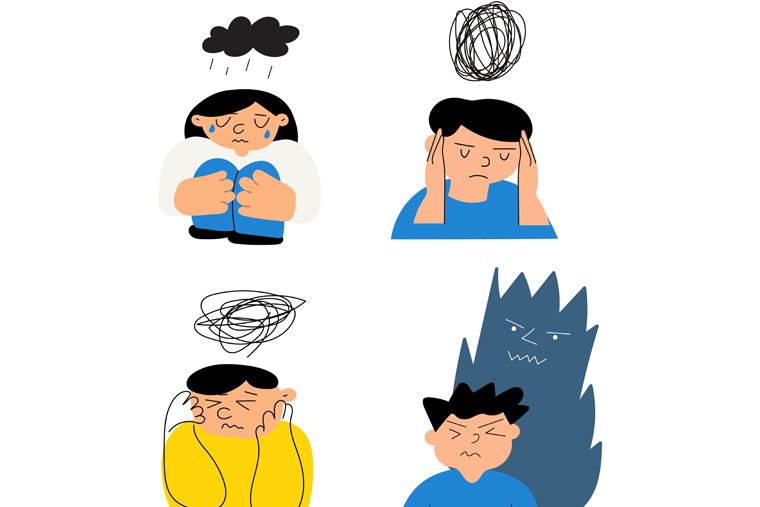In a new study from the lab of Deanna Barch, professor and chair of psychological and brain sciences in Arts & Sciences, and the Gregory B. Couch Professor of Psychiatry and of radiology at the School of Medicine, all at Washington University in St. Louis, researchers examined the association between distressing and persistent psychotic-like experiences (PLEs) in youth and important risk factors for psychopathology.

Using longitudinal data, the researchers found that youth who indicate they have persistent, distressing PLEs show impairment in a variety of areas such as cognition and reported psychopathology, highlighting the long-term challenges these children may face and the need for early intervention and support. The study, funded by the National Institutes of Health (NIH), appears in Molecular Psychiatry.
“These novel longitudinal data underscore that it is often only in the context of distress that persistent PLEs are related to impairments,” said lead author Nicole Karcher, instructor in psychiatry at the School of Medicine.
“Although we know some children have psychotic-like experiences, it has remained unclear which will go on to develop psychotic disorders later in life,” said Shelli Avenevoli, deputy director of the National Institute of Mental Health (NIMH) and an author on the study. “This study shows that children who have persistent, distressing psychotic-like experiences face significant challenges during development, suggesting the value of early intervention for all children with these experiences, regardless of whether they go on to develop psychotic disorders.”
More than 17% of children between the ages of 9 and 12 experience PLEs, such as mild perceptual abnormalities or delusional thoughts. However, only a small subset of these children will develop psychotic disorders. One factor that could help distinguish clinically relevant PLEs from benign ones is whether the psychotic experiences are persistent and/or distressing. In this study, Karcher and colleagues examined the extent to which persistent and/or distressing PLEs were associated with risk factors for psychosis.
The researchers utilized data from the Adolescent Brain Cognitive Development (ABCD) study, a large-scale research effort that is collecting data on 9- and 10-year-olds across the U.S. The researchers used data collected at three timepoints between Sept. 1, 2016, and Oct. 15, 2018. This included baseline data taken near the beginning of the study period and data collected one and two years later. At each of these timepoints, children were assessed for PLEs and level of distress associated with the experiences.
Overall in the study, the greatest functional impairments and mental health service utilization were seen in those with both distressing and persistent PLEs. In addition, youth who experienced persistent, distressing PLEs had greater bipolar, externalizing and internalizing symptoms than youth without persistent, distressing PLEs. The most significant impacts on cognitive functioning, such as greater deficits in fluid cognition, including working memory and receptive language, also were seen in youth with persistent, distressing PLEs. Youth with persistent, distressing PLEs also experienced more significant environmental adversity than their counterparts, such as higher overall deprivation levels and more adverse childhood experiences.
The researchers also found that youth who experienced distressing PLEs, whether transient or persistent, had delayed developmental milestone achievement, lower cortical and subcortical brain volumes, and differences in brain network connectivity compared with youth who had non-distressing PLEs.
The findings of this study indicate that children with persistent, distressing PLEs show elevated risk factors in domains such as psychopathology, functioning and cognitive performance. These results suggest that persistent, distressing PLEs represent an important screening indicator of youth who go on to develop long-term challenges, regardless of whether they go on to develop psychotic disorders, and may indicate which children are prime candidates for early intervention.
Read the full release on the NIH website.



